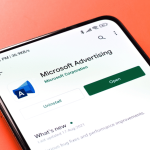6 overlooked ways to repurpose content and unlock new organic growth

“Work smarter, not harder” isn’t just a catchy phrase – it’s a survival tactic for content marketers.
Keeping up with a full content calendar can feel relentless, and constantly creating new material is a fast track to burnout.
That’s where content repurposing comes in, helping you get more mileage out of what you already have.
Sure, there are plenty of familiar ways to repurpose content – breaking long blog posts into social snippets, turning video transcripts into articles, and so on. You’ve likely done them all.
So what about the lesser-known approaches? The methods that few marketers think to use but should?
That’s what we’re going to cover here.
If you’re ready to tap into your creativity and squeeze even more value from your content, read on.
1. Enable Pinterest Rich Pins with Tailwind
The idea of enabling Rich Pins for Pinterest always surprises me because few know about it.
Perhaps that’s because the strategy originated in the blogging world, which doesn’t often intersect with B2B marketing circles.
In any case, it’s gold for content repurposing.
Rich Pins automatically sync metadata from your website to your pinned content.
When you enable them, Pinterest pulls details like page titles, prices, author names, and ingredients directly from your pages through Open Graph or Schema markup.
This enriches your Pins visually and contextually, improving their visibility in Pinterest. And Pinterest is a massive search engine with more than 587 million monthly users.
First, you’ll need to enable Rich Pins on your website. To do that, follow these steps:
- Sign up for a Business Pinterest account.
- During the setup, be sure to claim your website in Pinterest settings (this verifies you own it).
- Make sure your blog articles have optimized metadata. Use Open Graph or Schema.org to “tag” the elements on your pages (article, product, or recipe). Make sure all titles, descriptions, and other details are accurate and up to date.
- Next, validate your Pin. Go to Pinterest’s Rich Pin Validator, enter a URL from your site, and click Validate. Apply for approval (if prompted).
Any new or existing Pins that link to your site will automatically show Rich Pin info. Note that Pinterest may take a little time to sync and display the extra details.
Now, enabling Rich Pins alone is not a repurposing technique. You’ll need to actually post and re-share your Pins. This is where Tailwind comes in.
Tailwind is an app that shares your Rich Pins to other users’ collections, called boards.
This essentially pushes your Pins out to more users. The more your Pins are circulated, the more often they are seen, and the more traffic you can get.
This is an amazing repurposing strategy because:
- Tailwind is automated, so you don’t need to manually keep re-sharing.
- Your Pins’ presence on multiple boards can generate traffic for years.

The screenshot above is from my own business Pinterest account and shows that even without posting anything new for almost a year, my existing Pins generated more than 15,000 impressions and 464 clicks in the last 30 days.
After implementing this strategy for clients, Pinterest became their No. 1 or No. 2 organic traffic channel behind Google.
Few content marketers expect something as seemingly niche as Pinterest to outperform other platforms, but it does – and with strong results.
I recommend enabling Rich Pins across all of your blog posts, old and new, and automating reposting with Tailwind to unlock a major organic traffic channel.
It’s easy, inexpensive, and fast.
Dig deeper: Pinterest SEO: Your guide to brand discovery
2. Utilize audience-specific repurposing
Most content marketers know to repurpose content in different formats across channels:
- Images for social.
- Videos for YouTube.
- And so on.
Fewer think to segment content by audience type, which means we often miss highly targeted opportunities to adapt what we already have to different user interests.
Take a high-performing blog article like “10 best social media marketing tactics for 2025.”
It’s strong, current, and performs well across channels.
But the title is broad. It doesn’t specify who the tactics are for or address industry-specific use cases.
As a result, a business owner looking for niche advice might scroll past it.
Consider doing this content repurposing approach:
- List the audience types you want to reach. If you run a marketing agency, that might include lawyers, hairstylists, restaurant owners, and other business owners who might need your services.
- Validate interest in audience-specific topics using an SEO tool like Semrush to check search volume for terms such as “social media strategies for lawyers” or “social media strategist for stylists.”
- This isn’t just about SEO. You’re confirming there’s some audience demand. Even without SEO as the goal, tailoring the content will increase clicks on social, email, and other channels.
- Rewrite your existing article by updating the title to call out the audience and adjusting examples, stats, or recommendations to make them relevant to that group.
You’ll end up with tailored versions such as:
- 10 best social media marketing tactics for lawyers [2025 guide]
- 10 best social media marketing tactics for stylists [2025 guide]
- 10 best social media marketing tactics for restaurants [2025 guide]
Then promote each version where that audience spends time, such as LinkedIn groups, Facebook communities, email lists, or niche newsletters.
If you’re doing this for SEO, ensure each version is rewritten enough to avoid duplicate content issues and is hyper-specific to the target keyword.
If your main goal is engagement from social or email, light customization works.
With a few tweaks, one strong article can become a full series that speaks directly to every audience you serve.
Optimizing titles this way can increase CTR by 20%-50%.
3. Launch mini courses
When we talk about content repurposing, we usually focus on visibility – impressions, shares, and clicks.
We talk less about turning that content into new revenue streams.
We all want more clients and sales, but your existing content may be able to make money in other ways.
Coursera came onto my radar through a promotional email.
I’d purchased courses there before but hadn’t considered creating one myself.
Coursera is designed to help creators earn from their courses, and you don’t need to build something from scratch.
You can repurpose what you already have into a paid educational product.
Here’s how to use courses to make more money with your content:
- Identify existing blog posts or ebooks that already teach a process (e.g., “How to Manage Online Reviews” or “SEO Basics for Small Businesses”). Alternatively, look for old slide decks or a series of YouTube videos that could be compiled into a course.
- Try to pick a topic that gets consistent traffic or questions. These make for the most enticing courses.
- Come up with a title for your course based on the suggested outcome. If the blog article is, “How to Respond to Negative Google Reviews”, a compelling course title could be something like, “Reputation Management 101: How to Master Your Online Reputation to Win New Customers”.
- Next, group your content into course modules. Try to organize it logically, like so:
- Introduction: You can pull this from most blog introductions.
- Core lessons: Turn your in-depth articles into lesson scripts.
- Case studies: Use real client stories (anonymized).
- Templates or tools: Reuse checklists, worksheets, or swipe files.
- Action steps: Build simple quizzes or “apply this now” prompts.
- If there are gaps in your course, you can fill them in by recording an intro and outro, adding a voiceover, or adding a few slides.
These courses do not need to be long by any means.
A short course could be under 30 minutes long and cost $10. If you have a lot of existing content to use, it can take several hours and cost more. Use whatever you have.
Each lesson should focus on one key idea and stay under 10 minutes. Many existing YouTube videos already fit this format.
Then sign up with Coursera or a similar platform.
Coursera works with institutions and independent creators, and their Business and Partner Application pages often accept domain experts and credible brands.
If you want faster monetization, platforms like Udemy or Skillshare are more open-entry.
Users can find your courses organically on any of these platforms, giving your business an additional revenue stream.
Get the newsletter search marketers rely on.
See terms.
4. Display UGC in local ads
User-generated content (UGC) gives your brand strong social proof, yet most marketers limit it to digital content and ads.
UGC can also shine in local advertising – bus ads, billboards, event signage, and in-store displays.
If a brand has a local presence and invests in these formats, UGC belongs there. It makes the brand feel more human and trusted.
Here are a few examples:
- Transit ads: Feature customer photos and quotes on buses or bus shelters (e.g., “‘Best coffee in town.’ – @localjavafan”).
- Billboards: Highlight user Instagram posts and testimonials with short captions on billboards (e.g., “Loved by locals like @foodiejenna.”).
- Event signage: Display customer photos and reviews at trade shows or community events.
- In-store displays: Use printed UGC (e.g., selfies, testimonials, or star reviews) near checkout or product shelves.
- Posters and flyers: Add customer quotes or photos in local handouts and window ads.
A smart approach is to align local ads with your digital campaigns.
For example, if you’re running Meta ads promoting a new cafe location, mirror those visuals and quotes in nearby posters so customers recognize the brand both online and around town.
I also encourage clients to maintain a UGC archive in Google Drive.
We repurpose this content across blog posts, ads, emails, and local campaigns, building credibility and reinforcing social proof again and again.
Dig deeper: Social and UGC: The trust engines powering search everywhere
5. Grant access to exclusive swipe files
Don’t be afraid to give away the “secret sauce” – especially when the sauce can drive clicks.
I would bet that your brand or client is sitting on a treasure trove of “internal” content, like:
- SOPs.
- Templates.
- Sales scripts.
- And so on.
Most of this content doesn’t see the light of day unless used during new employee training.
Repurposing this content into public-facing swipe files instantly transforms your internal knowledge into shareable content assets (or even lead magnets).
Dig through your Drive and see what you’ve got.
- Look for templates, scripts, or SOPs that simplify a process for your audience/customer base.
- Strip out client names, private data, or competitive info. Keep only the structure or logic.
- Turn the material into downloadable PDFs, Google Docs, Notion templates, or Canva templates.
- Gate or ungate it. You can offer your swipe file as a free lead magnet to capture emails, or make it ungated for pure thought leadership and shareability.
- Share it across your channels. You can create short clips, carousels, or screenshots teasing “what’s inside” to drive traffic from social platforms.
People love this kind of content because it feels like a “peek behind the curtain.”
It lets customers see your process, understand your expertise, and trust you more when it’s time to hire or buy.
Sharing a small part of your system only amplifies your value in their eyes.
Sometimes the best content isn’t on your blog or socials – it’s in your internal Drive.
There may be creative ways to use that material to your advantage.
6. ChatGPT to FAQ pipeline
LLMs like ChatGPT and Notebook LM are great tools for content marketing, but they’re most often used for content creation, rewriting, and similar tasks.
I’ve found them especially useful for building a “knowledge base” that consolidates a brand’s existing materials into content customers can actually use.
I have an arborist client that offers emergency tree removal services.
Their site is full of content – blog articles and service pages – but it’s a lot for customers to sift through.
The brand noticed people were asking the same questions repeatedly, and answering them became time-consuming.
We could have brainstormed FAQs or asked ChatGPT to generate ideas, but we didn’t.
Instead, I created a knowledge base in Notebook LM, uploaded copies of their service pages, and prompted it to crawl the blog.
Once everything was consolidated, I asked Notebook LM to generate FAQs and answer them accurately based on the site’s existing content.
The result was a concise, accurate, fully sourced FAQ set that:
- Focused on the most relevant questions for prospective clients.
- Matched the brand’s existing messaging.
- Linked directly to the original blog posts or service pages.
We published it as a central FAQ page, featured prominently and cross-linked throughout the site.
The outcome was simple but effective: customers now had one destination for their most common questions.
By reformatting what already existed, the brand extended the lifespan and usefulness of its content, turning it into a practical self-service tool.
It also created a fully “fed” knowledge base we now use to fact-check new content, ensure consistent messaging, and identify existing material worth linking to.
Reuse, recycle, revive
We can all appreciate finding new, economical ways to repurpose existing content.
Some of these strategies are highly effective but don’t get the airtime they deserve.
I’m glad to share them, as they’ve delivered meaningful results for my clients and cost almost nothing to implement.
If you’re looking for unique ways to repurpose your content, give a few of these strategies a try.









Recent Comments